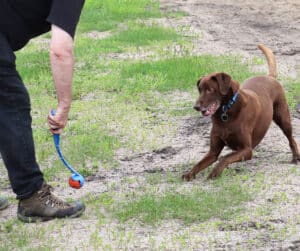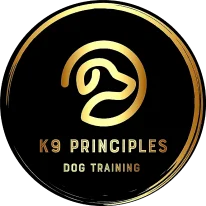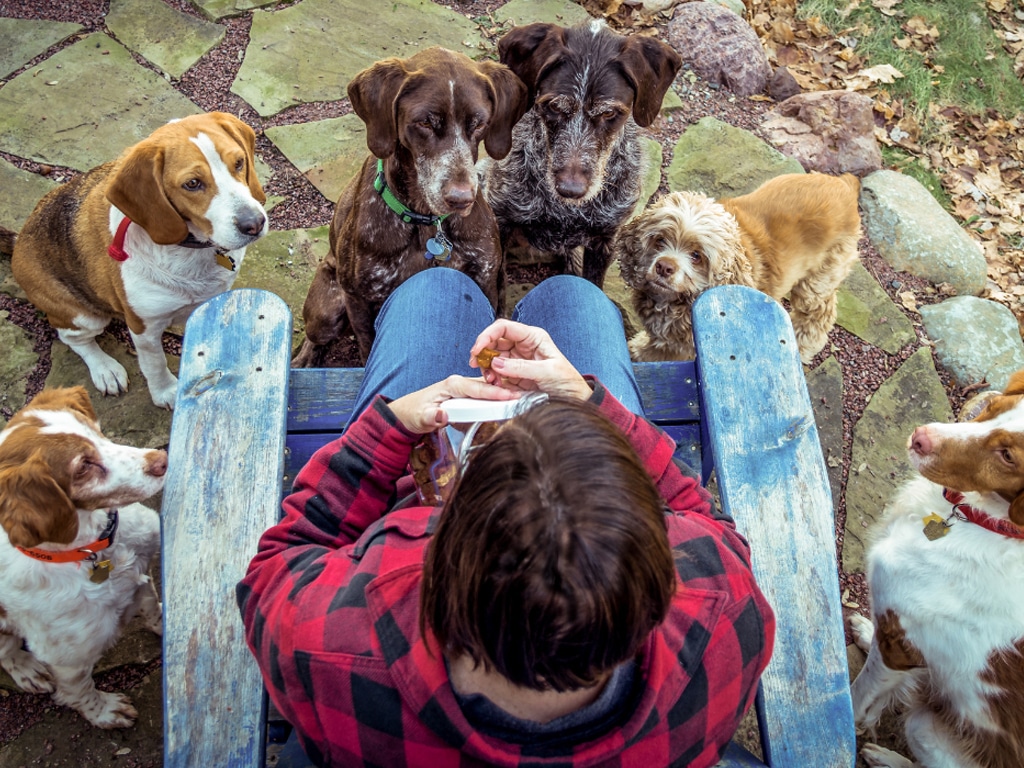Introduction to the Premack Principal in Dog Training
If you’re a first-time dog owner, you’re likely experiencing the excitement and challenges that come with training your new companion. You might already know the importance of basic behaviours like sitting, staying, and walking calmly on a lead, but did you know that you can use your dog’s natural preferences to make training more effective? This concept, known as the Premack Principal, is a training method that turns what your dog wants to do into a reward for following your cues. By using the activities your dog loves as motivators, you can improve their behaviour and make learning fun for them.
The Premack Principal is particularly effective for dog training in Hamilton where you may encounter plenty of distractions in parks, neighbourhoods, or at social events. Whether you’re new to the idea of dog training or simply looking to expand your skills, understanding the Premack Principal will give you a valuable tool for creating a strong and positive bond with your dog. So, what exactly is the Premack Principal, and how can it help you achieve better behaviour from your dog?
What is the Premack Principal?
The Premack Principal is a behavioural concept introduced by psychologist David Premack in the 1950s. It’s sometimes referred to as “Grandma’s Rule,” since it’s based on a simple idea that resonates across species, including humans. Just as a grandmother might tell her grandchild to finish their vegetables before dessert, the Premack Principal suggests that a high-probability behaviour (one your dog loves) can reinforce a low-probability behaviour (one they’re less keen on). Essentially, it’s “do this, and you get that.”
For dogs, this principal becomes a powerful motivator, especially when applied to everyday training. It works by leveraging your dog’s favourite activities—like running, playing, or sniffing—as rewards for following a cue like “sit” or “stay.” This method not only makes training more enjoyable for dogs but also teaches them that good things come after following your instructions. In Hamilton dog training, where distractions are frequent, the Premack Principal can be particularly helpful for redirecting a dog’s attention in a positive way.
Understanding ‘High-Probability’ and ‘Low-Probability’ Behaviours
To make the most of the Premack Principal, it’s important to understand what high and low-probability behaviours mean in the context of dog training. High-probability behaviours are things your dog would choose to do without any prompting—these are often fun, instinctive actions like sniffing around, playing with other dogs, or chasing a toy. Low-probability behaviours, on the other hand, are those that may not come as naturally or require more effort, such as sitting still, staying, or coming back when called.
By using a high-probability behaviour as a reward for a low-probability one, you’re creating a powerful incentive for your dog to follow cues. This approach recognises that dogs have their own natural preferences and incorporates them into training rather than working against them.
How Does the Premack Principal Work in Dog Training?

The Premack Principal taps into the natural behaviours of dogs to reinforce cues in a way that feels intuitive and enjoyable for them. Unlike traditional methods that rely solely on treats or praise, the Premack Principal utilises the activities your dog would choose to do on their own as a reward. Let’s look at an example to illustrate how it works: imagine your dog loves to chase squirrels. Rather than trying to prevent this altogether, you could ask them to “sit” or “wait” before giving them a chance to chase or run. This way, they associate the reward (chasing) with a positive response to your cue.
This principal also makes training in busy environments easier, which is particularly valuable in Hamilton dog training scenarios where distractions are part of the experience. By allowing your dog to “earn” a high-reward behaviour after responding to a cue, you’re making the entire process of training more effective and enjoyable.
Using the Principal to Reinforce Obedience and Cooperation
Training isn’t just about teaching your dog to follow cues; it’s about creating cooperation between you and your pet. With the Premack Principal, obedience becomes less about following orders and more about working as a team. Your dog learns that listening to you leads to opportunities to do what they love, fostering a sense of partnership. This mutual understanding makes them more likely to respond positively, even when distractions are present.
Why the Premack Principal is Effective
The effectiveness of the Premack Principal lies in its alignment with your dog’s natural behaviour. When you allow a dog to engage in something they enjoy as a reward for listening, their brain releases dopamine, the same chemical that’s responsible for pleasure and reward in humans. This creates a positive feedback loop where the dog associates their obedience with a pleasant outcome, making them more likely to repeat the desired behaviour in the future.
Making Training Enjoyable and Natural for Dogs
One of the biggest advantages of the Premack Principal is that it makes training feel like a natural part of life rather than a series of rigid tasks. By working with your dog’s instincts instead of against them, you’re creating a positive training environment that doesn’t feel forced. This approach helps build a stronger, more trusting bond between you and your dog, as they begin to see training as an opportunity to earn something enjoyable rather than something to resist or ignore.
Practical Applications of the Premack Principal

The Premack Principal is versatile and can be adapted to suit almost any training environment or scenario. For example, if your dog is obsessed with playing fetch, you could ask them to “sit” or “stay” before throwing the ball. Similarly, if they love exploring new scents, you could request a brief “come” or “wait” before allowing them to sniff around. These small actions encourage your dog to connect their obedience with a reward, making them more likely to listen in future situations.
Handling Distractions with the Premack Principal
If you’re working on dog training in Hamilton, you’re likely to encounter distractions like other dogs, children, and outdoor smells that make it hard for your dog to focus. Instead of struggling to compete with these distractions, you can use them as part of the training process. If your dog loves meeting new people, for instance, ask them to “sit” or “stay” before letting them approach someone. By doing this, you’re turning the distraction into a reward, which not only reinforces good behaviour but also teaches your dog self-control.
Common Misconceptions About the Premack Principal
Though effective, the Premack Principal is sometimes misunderstood. One common misconception is that it’s merely a form of bribery. However, bribery involves offering a reward before the desired behaviour, which can create dependency on the reward to perform the behaviour. In contrast, the Premack Principal offers the reward after the behaviour, which reinforces and strengthens the association between the action and a positive outcome.
Why It Doesn’t Replace Traditional Reward Systems
Another misconception is that the Premack Principal replaces traditional rewards like treats, toys, or praise. While it’s a valuable tool, it’s not a standalone method and should be used alongside other training techniques. Traditional rewards still play an essential role in building a balanced training routine. By combining treats with activity-based rewards, you create a well-rounded approach that keeps your dog engaged and responsive.
Applying the Premack Principal in Everyday Dog Training
The Premack Principal isn’t limited to structured training sessions—it’s a technique that you can incorporate into everyday interactions with your dog. Whether you’re on a walk, at home, or visiting a park, there are countless opportunities to reinforce cues through natural rewards. Let’s say your dog loves exploring new areas during walks. You can use this to your advantage by asking them to “heel” or “sit” briefly before letting them wander or sniff around. Over time, they’ll learn that these small acts of cooperation lead to enjoyable outcomes.
Real-Life Examples for Hamilton Dog Training
In the context of Hamilton dog training, the Premack Principal is particularly useful in outdoor spaces like parks, where dogs are likely to be drawn to new sights and smells. Imagine you’re at a busy park, and your dog is excited to explore. Instead of allowing them to dash off immediately, you could ask them to “come” or “stay” momentarily, rewarding them with the freedom to roam once they comply. By turning high-energy environments into learning opportunities, you’re giving your dog the tools they need to stay focused, even when distractions are at their peak.
Working with K9 Principles for Effective Dog Training in Hamilton
For first-time dog owners, navigating training techniques like the Premack Principal can be challenging without professional guidance. That’s where K9 Principles comes in. As a leading provider of dog training in Hamilton, K9 Principles offers expertise that can help you master this method. Our professional dog trainers are skilled in adapting the Premack Principal to various dog personalities and energy levels, ensuring your dog receives tailored support that suits their unique needs.
Benefits of K9 Principles for First-Time Dog Owners
Training with K9 Principles provides more than just basic obedience. You’ll gain a deeper understanding of how dogs learn, helping you apply techniques like the Premack Principal effectively. For first-time dog owners, this insight can be invaluable, as it takes the guesswork out of training and helps build confidence. With personalised advice and step-by-step support, you’ll be better equipped to handle real-life scenarios and ensure your dog grows into a well-behaved and happy companion.
Troubleshooting: When the Premack Principal Doesn’t Seem to Work
Like any training method, the Premack Principal may require adjustments based on your dog’s individual needs. If you’re finding that your dog isn’t responding well, consider whether the reward you’re using holds enough value. Sometimes, the activity you’ve chosen as a reward might not be motivating enough, or your dog might need more consistent practice to fully understand the connection between their behaviour and the reward.
Tips for Refining Your Approach
If the Premack Principal isn’t yielding the results you’re after, try using smaller steps and reinforcing each one. For example, if you’re working on recall, you could start by rewarding your dog for making small progressions toward you rather than waiting for a perfect return. Adapting the method to match your dog’s pace and personality is key. Remember, patience and persistence will help them develop a stronger understanding of the behaviour you’re encouraging.
Conclusion
 The Premack Principal is a highly effective tool in dog training that enables you to turn your dog’s natural desires into valuable learning opportunities. By leveraging their love for activities like play, running, or exploring, you can create a training environment that feels less like work and more like a team effort. For first-time dog owners in Hamilton, this method simplifies training by transforming distractions into rewards, allowing your dog to grow in confidence and obedience. With guidance from professionals like K9 Principles, you’ll be well-equipped to apply the Premack Principal successfully, building a meaningful bond with your dog that’s rooted in trust, cooperation, and mutual enjoyment.
The Premack Principal is a highly effective tool in dog training that enables you to turn your dog’s natural desires into valuable learning opportunities. By leveraging their love for activities like play, running, or exploring, you can create a training environment that feels less like work and more like a team effort. For first-time dog owners in Hamilton, this method simplifies training by transforming distractions into rewards, allowing your dog to grow in confidence and obedience. With guidance from professionals like K9 Principles, you’ll be well-equipped to apply the Premack Principal successfully, building a meaningful bond with your dog that’s rooted in trust, cooperation, and mutual enjoyment.
- Name: K9 Principles
- Address: Haldimand County, Greater Hamilton Area, Burlington and Most of Norfolk County
- Phone: 289 880-3382
- Email: k9principlesinc@gmail.com
- Website: www.k9principles.ca
FAQs
-
A. Yes, the Premack Principal is adaptable to any breed, as it’s based on using natural motivations to encourage obedience. Regardless of breed, all dogs respond well to high-reward behaviours.





